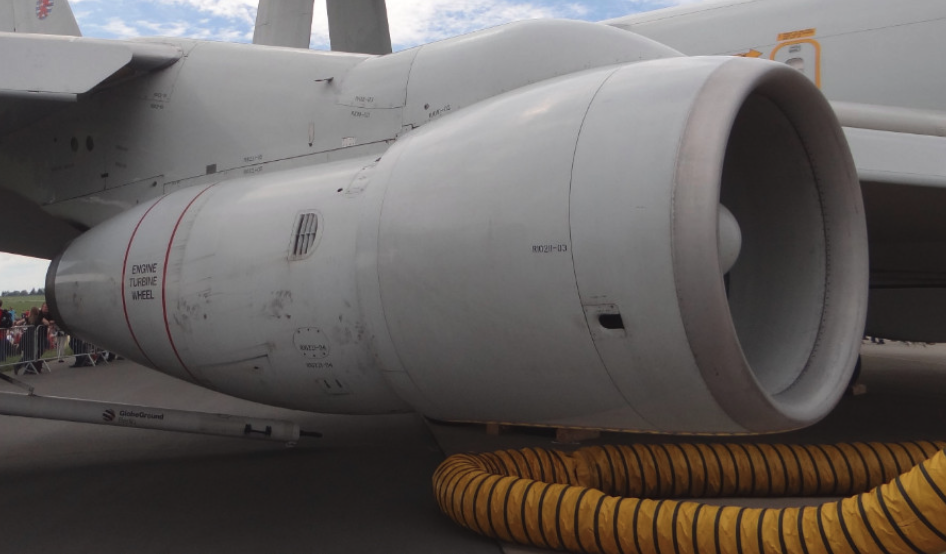Kraków 2017-01-11
Further achievements in the construction of turbojet engines

Description to the photo: Boeing E-3 Sentry AWACS, with Pratt & Whitney JT3D (TF33-PW) engines.
Pratt & Whitney JT3D / TF33. 1957 year.
The JT3D / TF33 engine is a development of the JT3C / J57 engine by making it in the two-flow technology. The engine was developed by the airlines for the B 707 aircraft. Work on it started in 1957. The first operational use of the propulsion took place on June 22, 1960, when the first Boeing B707-120 took to the air. Soon, McDonnell Douglas chose the JT3D engine as the primary drive for the DC-8 aircraft.
As the JT3D / TF33 engine turned out to be more economical than the JT3C / J57, the USAF decided to use it in large military aircraft. On March 6, 1961, the first flight was made by the B-52 H Stratofortress bomber. The engines went to machines such as; Lockheed C-141 Starlifter and Boeing C-135B Stratolifter, and from 1973 they were installed on Boeing E3A-AWACS aircraft.
One of the reasons for this was the large number of engines on the aftermarket, from the retired B707, DC-8. As a consequence, all B-52 bombers received a new propulsion. Since the B-52 planes have been in service for an unexpectedly long time, the topic of replacing the power unit appears from time to time. The main problem is that the B-52s have eight engines, and long gone are the days where the JT3D / TF33 engine was considered fuel efficient. The matter is not trivial because, according to USAF information, the B-52 planes will remain in service until 2040, i.e. over 20 years. P & W President Bennett Croswell announced that the company is ready to undertake the replacement of power units for the B-52 from eight to four engines, much more economical, while maintaining or even increasing the total thrust of the power unit. As usual, in these cases the main role is played by finances. Crude oil prices remain relatively low, so the cost of modernization may not pay off. At the same time, Pratt & Whitney developed the JT3D / TF33 engine upgrade package to reduce fuel consumption. The main changes would be the use of new fuel injectors. The retrofit would save 10-25% of fuel, which is a very good result. In 2015, the USAF revealed that it was considering purchasing 650 second-hand engines for its B-52 bombers. Since the USAF currently only operates around 76 B-52 bombers, it is easy to conclude that these are TF33 engines. We should also remember that TF33 engines are used by KC-135 and Boeing E-3 Sentry AWACS planes.
Written by Karol Placha Hetman
